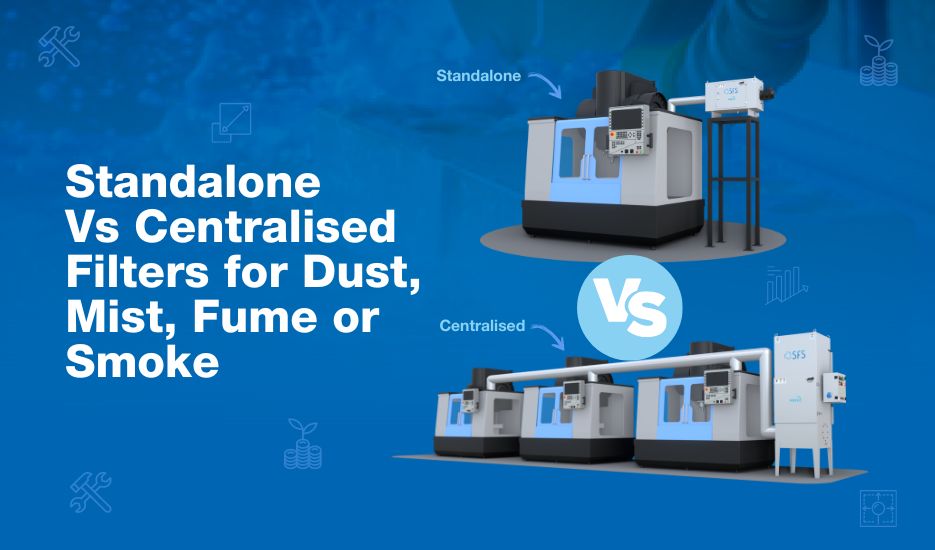One of the common questions asked by customers in evaluating industrial air filtration solutions is the choice between standalone and centralised filtration systems.
Choosing the right filtration system depends on several factors, including application requirements, economics, long-term performance, and desired benefits. Users need to approach the application by evaluating the size of the facility, the number of workstations, and the level of air filtration needed. SFS has the expertise to provide guidance on system selection, customization, and maintenance. By consulting with SFS experts, users can make informed decisions and ensure the air filtration system meets their specific requirements for a safe and clean working environment.
Here is a table that summarises and compares the benefits between standalone and centralised filters:
| Standalone Air Filtration | Centralized Air Filtration | |
| Definition | Independent filtration units for localized air filtration of a single station | Central system that serves multiple workstations or areas |
| Application Requirements | Suitable for small-scale operations or specific work areas | Ideal for larger facilities or when multiple areas need filtration |
| Investments | Lower initial investment and installation costs | Relatively higher initial investment and installation costs |
| Benefits | Provides localized filtration where it’s needed | Efficiently serves multiple workstations or areas simultaneously |
| Maintenance | Separate maintenance for each unit | Centralized maintenance for the entire system |
| Scalability | Limited scalability or use for multiple stations due to individual units | Scalable to accommodate additional workstations or areas |
| Flexibility | Limited flexibility in adjusting airflow or filtration capacity | Flexible in adjusting airflow and filtration based on needs |
| Occupancy Safety | Provides filtration for localized work areas | Ensures consistent air quality across the entire facility |
| Risks | Downtime affects only a single station | Downtime requires shutdown of all stations at once |
Choosing the right filtration system, whether standalone or centralized, depends on several factors. Here is a general approach which can help to make the right choice:
Site conditions: Evaluate the size of the facility, the number of workstations or areas requiring filtration, and the level of air filtration needs.
Budget allocation: Consider the budget and initial investment.
Short and long-term benefits: Determine the specific benefits needed for the application.
Maintenance resources: Assess the maintenance requirements and resources available.
Future expansion: Consider the future scalability needs of the facility. Assess the need for adjusting airflow or filtration capacity in view of capacity expansion.
To carefully evaluate these factors consult with SFS experts. We can help you determine the most suitable option for filtration of dust, mist, fume or smoke in your specific industrial application.
Get in touch with us

